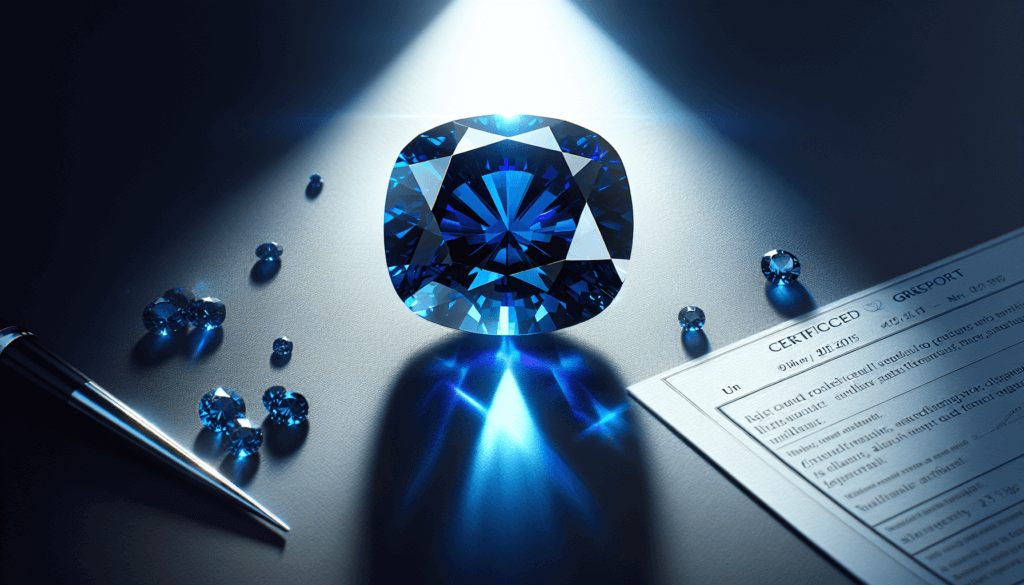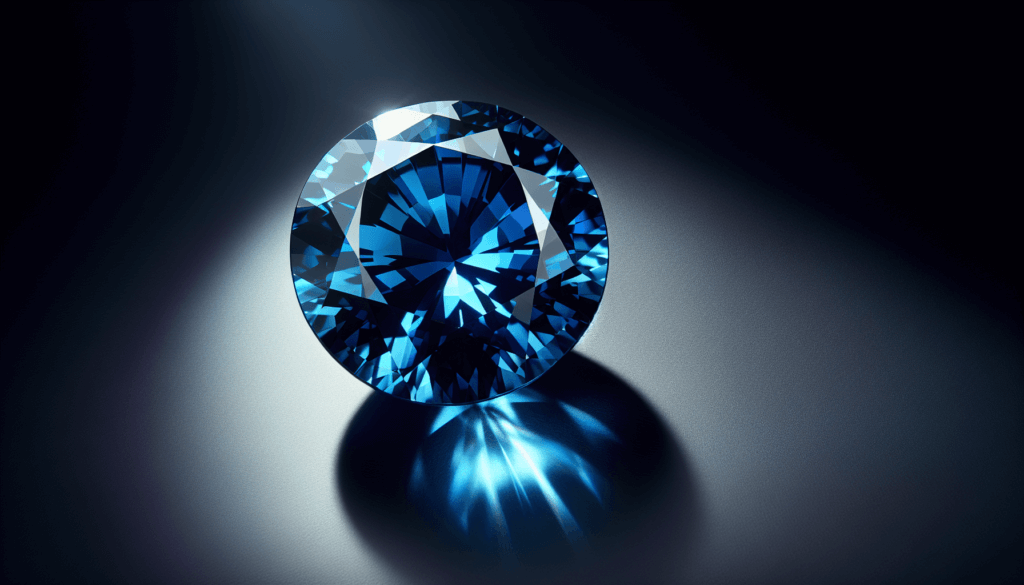Are you curious about the value of sapphires in the resale market? Well, you’ve come to the right place. In this engrossing article, you will find an in-depth discussion about the factors that contribute to the resale value of sapphires, exploring various aspects such as color, clarity, cut, and carat. Brace yourself as you embark on a journey to examine the true worth of your precious stones in the resale market.

Understanding Sapphires
When you think of sapphires, a deep blue gemstone might come to mind. However, sapphires come in a variety of hues and possess fascinating historical importance. You’ll also learn how to classify them based on their diverse colors.
Varieties of sapphire gemstones
You might be surprised to know that sapphires are not just blue. They are found in almost all colors from green and yellow, to pink and purple. In fact, red sapphires are known as rubies. Sapphires are made of a mineral called corundum, and the varying colors are due to different trace elements within the crystal structure. It’s fascinating, isn’t it?
Historical importance and uses
Sapphires have a rich history filled with myth, legend, and belief. Ancient civilizations believed that sapphires had powerful protective abilities and could provide spiritual insight, while in medieval times, people believed they could cure ailments. Today, sapphires are used widely in jewelry, industrial applications, and even in scientific instruments.
Color classifications
While the blue sapphire is the most famous and prized, sapphires come in a variety of colors. The value of a sapphire is greatly influenced by its color, and they are classified into categories such as classic blue, fancy color, and color-change sapphires.
Sapphires’ Intrinsic Value
The intrinsic value of sapphires depends on a variety of factors and is comparable to other precious gemstones. Let’s now dive into these influences and understand the process of gemstone grading.
Factors influencing sapphires’ value
The value of sapphires depends on their color, clarity, cut, and carat weight, commonly known as the four “Cs”. Moreover, the place of origin also affects its value. For instance, blue sapphires from Kashmir command higher prices due to their superior color quality.
Comparison with other precious gemstones
Unlike diamonds, where the quality grades are standardized, sapphire grading is not as defined. However, high-quality sapphires can command values that are comparable to those of diamonds, rubies, and emeralds, which are also considered precious gemstones.
Understanding gemstone grading
Gemstone grading primarily involves the evaluation of color, transparency, and inclusions. For sapphires, the grading process is more subjective and relies heavily on the expertise and knowledge of the grader.

The Global Market for Sapphires
The global sapphire market is vast, encompassing different geographical regions and various sectors. Together, these factors significantly impact the overall market size and the price points for the gemstones.
Major markets and players in the sapphire industry
Major markets for sapphires include the USA, Europe, and Asia, with Sri Lanka, Burma (Myanmar), and Madagascar being top producers. Understanding the key players in these markets is essential for buyers and seller alike as these stakeholders significantly influence market dynamics.
Overall market size and demand
The global demand for sapphires is high due to their popularity in jewelry and industrial applications. While precise figures for market size vary, some estimates put the global sapphire market at several billion dollars annually.
How the international trade impacts sapphire prices
Ever-changing trade policies, tariffs, and economic factors can greatly impact the international price of sapphires – both raw and finished. Events such as regulatory changes, political instability, or shifts in currency values can cause notable fluctuations in prices.
Sapphires and Jewelry
Sapphires make stunning centerpieces in jewelry, whether paired with other stones or standing alone.
How sapphires are used in jewelry
You can find sapphires in a wide range of jewelry, including rings, earrings, necklaces, and bracelets. Their durability and vibrant colors make them a popular choice for all types of settings.
Popular sapphire jewelry designs
Designs featuring sapphires range from classic to contemporary. The Princess Diana engagement ring, now worn by Duchess Catherine, has undoubtedly boosted the popularity of sapphire engagement rings. Moreover, sapphires are often paired with diamonds in various jewelry settings.
Designer vs. generic sapphire jewelry
Designer jewelry often carries a higher price tag due to brand recognition and sometimes superior craftsmanship. However, generic pieces can still showcase the stone’s beauty and offer a more affordable option while maintaining quality.

Sapphires in Investment and Collectibles
Some consider precious gems as an alternative investment. Collectible sapphire pieces, too, can fetch substantial prices.
The value of sapphires in investment portfolios
Sapphires, due to their rarity and demand, can potentially add diversification to an investment portfolio. They are often less volatile than traditional investments and can provide a hedge against inflation.
Collectible sapphire pieces and their pricing
Sapphire pieces with historical or cultural significance often attract collectors. Prices can vary widely, driven by factors like rarity, provenance, and desirability.
Impact of historical provenance on sapphire value
Provenance, or the record of ownership, can significantly enhance the value of a sapphire piece. A sapphire with a documented history linked to famous personalities or monumental events can command a premium price.
Appraising Sapphires for Resale
Understanding the appraisal process is crucial to obtaining a fair price when reselling a sapphire.
Methods for valuing sapphires
Valuing sapphires involves a detailed examination of the gem’s color, cut, clarity, size, and weight. Independent gemological labs can provide an unbiased assessment of these factors.
Inclusions and defects affecting sapphire appraisal
Inclusions, or internal flaws, negatively affect the clarity and value of a sapphire. Similarly, external defects, such as scratches or chips, can lower a gem’s appeal and hence its value.
Role and importance of licensed appraisers
A licensed appraiser has the necessary qualifications, training, and experience to accurately assess a sapphire’s value. They adhere to professional appraisal standards and practices, ensuring fair and reliable valuations.
Selling Sapphires
When it comes time to sell your sapphire, knowing your options can help you get the best price.
Different channels to sell sapphires
Potential channels include auctions, jewelry retailers, online marketplaces, or directly to gemstone collectors. Each of these channels has its pros and cons regarding convenience, price, and timeframe.
Online versus physical auctions
Online auctions can reach a global audience and occur quicker, but competition is high. Physical auctions, while slower, allow potential buyers to closely inspect gems, often leading to higher prices.
Direct sale to collectors or jewelers
Selling directly to jewelers or collectors can be beneficial as they understand the value of sapphires. However, it’s important to negotiate effectively to ensure a fair deal.
Understanding Market Fluctuations
Sapphire prices are dynamic, influenced by various economic and fashion trends.
The impact of economic cycles on sapphire prices
During economic booms, demand and prices for luxury goods like sapphires often rise. Conversely, economic downturns may see decreased demand and lower prices.
Influence of trends and fashion on the sapphire market
Fashion trends can greatly influence the market for sapphires. For instance, a public figure wearing sapphire jewelry could boost demand and prices for this gemstone.
Dealing with volatility in gemstone markets
Just like other markets, the gemstone market experiences volatility. Savvy buyers or sellers stay informed about market trends to time their transactions for optimal benefit.
Mitigating Risks in Sapphire Resale
Ensuring the authenticity of your sapphire, opting for reliable storage and insurance, and being aware of scams can mitigate risks associated with resale.
How to verify sapphire authenticity
It’s important to obtain a certificate from a reputable gemological lab to confirm your sapphire’s authenticity and features. This benefits both buyers and sellers by providing a reliable source of information about the gem.
The importance of reliable storage and insurance
Storing your sapphire securely and insuring it against loss or damage are key factors in protecting your investment.
Recognizing and avoiding common scams
Knowing common scams, such as synthetic or treated sapphires being passed off as natural, can help you steer clear of potential pitfalls.
Case Studies of Sapphire Resales
Case studies provide real-world examples of successful and unsuccessful sapphire resales.
Examples of successful sapphire resales
Successful sapphire resales often involve high-quality gems with desirable attributes. Such sales often achieve a significant premium over the original purchase price.
Analysis of failed or underperforming resales
Failed or underperforming resales often involve poor-quality sapphires, lack of buyer interest, or poorly timed sales. Analyzing these situations can provide valuable insights.
Lessons learned from case studies
These case studies underscore the importance of understanding the sapphire market, having your gem appropriately valued, and waiting for the right time to sell to maximize your return.
So, do sapphires have a resale value? Definitely, but it’s important to remember that like other investments, knowledge is key. The more you understand about sapphires, the better you can navigate the buying and selling process.



